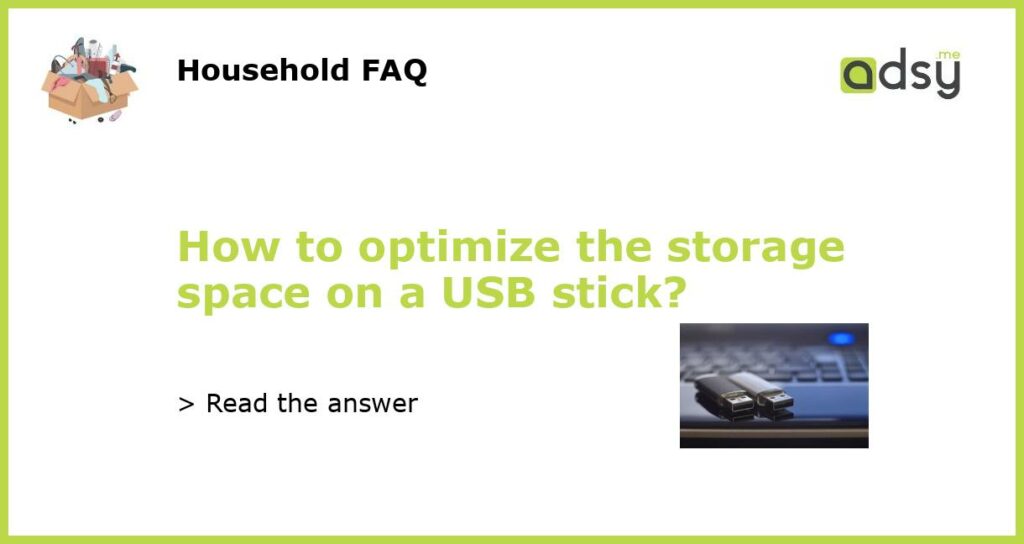Remove unnecessary files and folders
One of the simplest ways to optimize the storage space on a USB stick is to remove any unnecessary files and folders. Over time, USB sticks can accumulate a lot of temporary files, duplicate files, or files that you no longer need. Take some time to go through the contents of your USB stick and delete any files or folders that are taking up unnecessary space.
Compress files and folders
If you have large files or folders that you still need to keep on your USB stick, but they are taking up too much space, consider compressing them. Compressing files and folders can significantly reduce their size, allowing you to free up storage space on your USB stick. There are various software programs available that can help you compress files and folders with ease.
Use cloud storage services
Another way to optimize the storage space on a USB stick is to utilize cloud storage services. Cloud storage allows you to store files and folders remotely, freeing up space on your USB stick. Services like Dropbox, Google Drive, and OneDrive offer free storage options with the ability to access your files from any device with an internet connection.
Clear your recycle bin
When you delete files from your USB stick, they are often moved to the recycle bin. However, the files still occupy space on your USB stick until you empty the recycle bin. Make sure to regularly empty your recycle bin to clear up space on your USB stick. To do this, right-click on the recycle bin icon on your desktop and select “Empty Recycle Bin.”
Optimize file formats
Changing the file format of certain files can help optimize the storage space on your USB stick. For example, if you have a lot of images stored on your USB stick, converting them to a more efficient file format like JPEG can reduce their size. Similarly, if you have documents that are stored in a file format that takes up a lot of space, such as DOCX, consider converting them to a more compact format like PDF.





